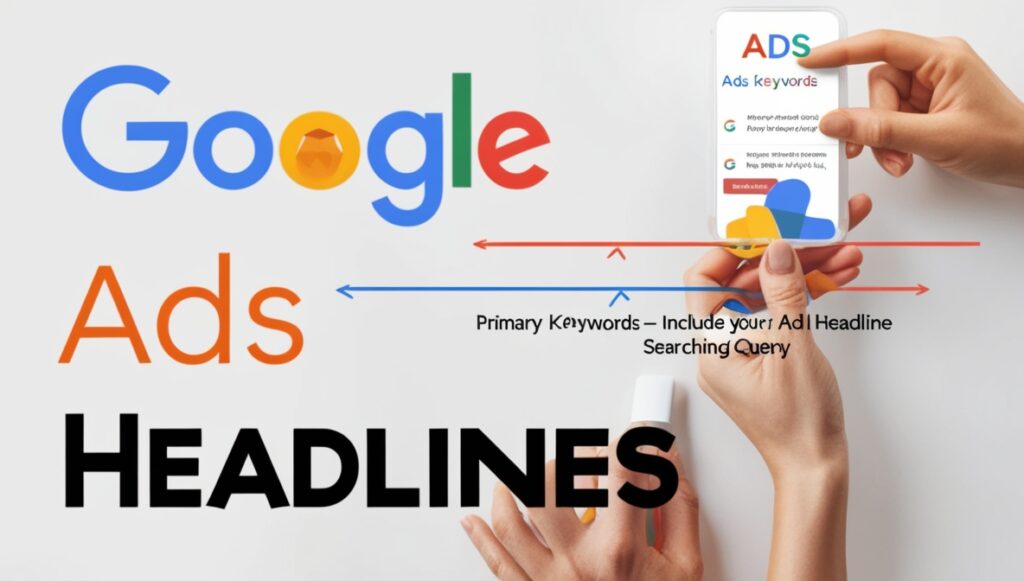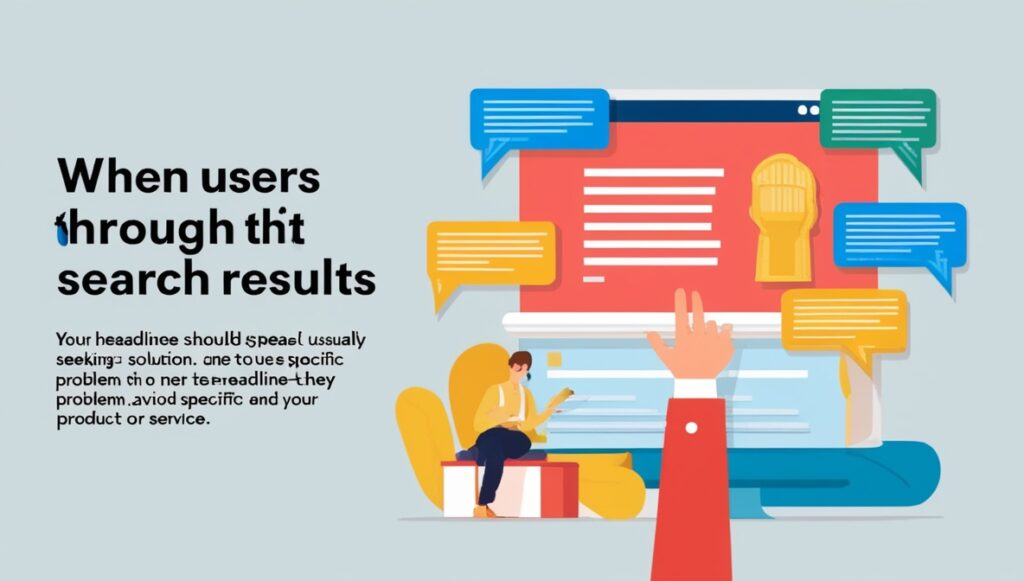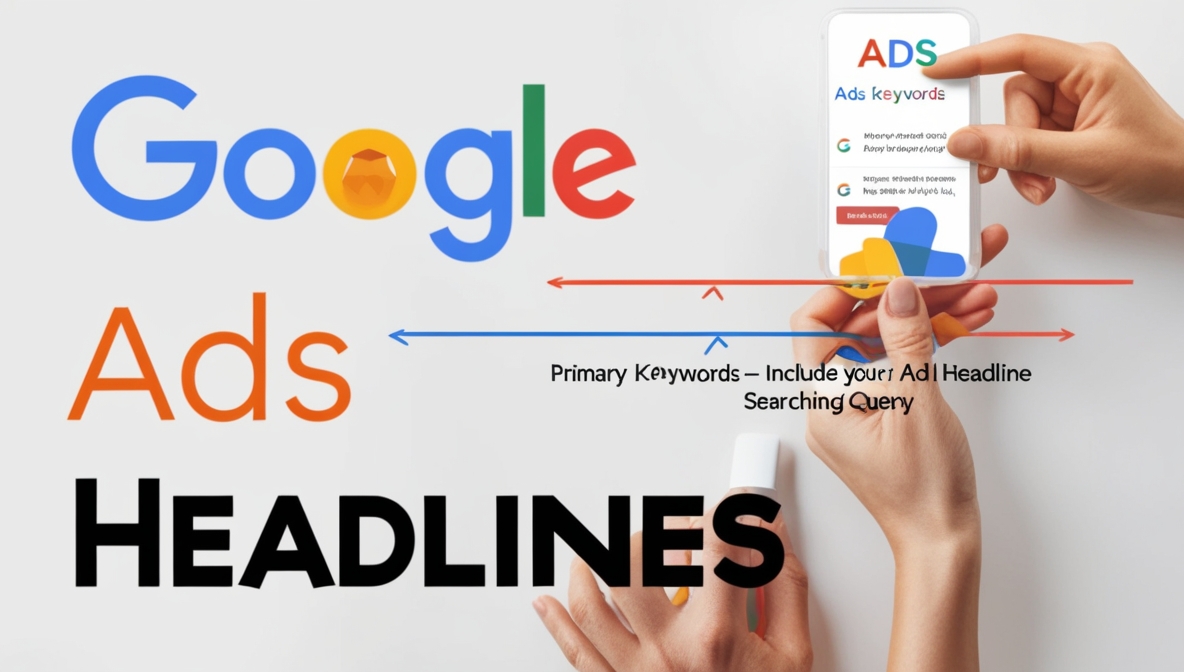
In the fast-paced world of digital marketing, creating compelling Google Ads is key to driving traffic and conversions. However, writing attention-grabbing Google Ads headlines can be more challenging than it seems. With limited space and stiff competition, crafting headlines that stand out and encourage users to click is crucial to maximizing your ad’s performance.
In this guide, we will walk you through how to optimize Google Ads headlines effectively. By leveraging best practices, keyword integration, and creative strategies, you’ll be able to enhance your ads and generate more leads for your business.
What Makes a Good Google Ads Headline?

A good Google Ads headline isn’t just about being catchy; it needs to provide value, speak to user intent, and motivate action. Google Ads headlines have limited space, with up to three headline fields where each field allows for 30 characters. This limitation means every word must count.
Key factors that contribute to a well-optimized headline include:
- Relevance: Ensure the headline matches the user’s search query. This can help boost your Quality Score and drive higher click-through rates (CTR).
- Keyword Usage: Keywords that match the user’s query can make the ad more relevant, increasing the chances of engagement.
- Benefits and Features: Highlight what the user stands to gain, whether it’s a solution to a problem, a special offer, or product features.
- Call to Action (CTA): A strong CTA can direct the user to take the next step, such as “Buy Now,” “Learn More,” or “Sign Up Today.”
With this in mind, let’s dive into practical strategies for optimizing your Google Ads headlines.
1. Start with Keyword Integration

When optimizing Google Ads headlines, it’s essential to include your primary keywords. This helps ensure that your ad appears in front of users searching for those terms, and it signals to Google that your ad is relevant to the search query. But be mindful of keyword stuffing—forcing too many keywords into a headline can make it appear unnatural or spammy, which may negatively impact performance.
Here’s an example:
If you’re selling SEO services, your primary keyword might be “SEO services.” Here are a few headline ideas that effectively incorporate keywords without being repetitive:
- “Affordable SEO Services to Boost Your Rankings”
- “Expert SEO Services for Higher Search Visibility”
As a best practice, provide at least 5 unique headlines that don’t repeat the same or similar phrases. Be sure to include a keyword in 2 headlines. Be sure to have at least 3 other headlines that do NOT include your keywords. Try highlighting additional benefits and features, a problem you’re solving, or shipping and return information.
Example Headline Set:
- “Affordable SEO Services to Boost Your Rankings”
- “Expert SEO Services for Higher Search Visibility”
- “Get Found Online with Proven Marketing Strategies”
- “Drive More Traffic and Increase Conversions Today”
- “Free Consultation: See How We Can Help Your Business Grow”
This approach gives you a balance of keyword-rich headlines and general, benefit-driven ones.
2. Diversify Your Headlines for Better Performance

Google Ads allows you to write multiple headlines, and it will rotate them to find the best-performing combinations. This feature, known as Responsive Search Ads (RSA), is designed to maximize the effectiveness of your ad by automatically testing different headline and description combinations.
To make the most of RSA, ensure that your headlines are diverse. Avoid writing several headlines that repeat similar phrases or structure. Instead, focus on a variety of angles to address different customer pain points, benefits, and emotional triggers.
For example, you can have one headline that focuses on urgency, like:
- “Limited-Time Offer: Boost Your SEO Now!”
Another could focus on a specific benefit:
- “Increase Your Traffic with Proven SEO Techniques”
And yet another could focus on trust:
- “Trusted SEO Experts with 10+ Years of Experience”
By diversifying your headlines, you give Google more options to find the best-performing combination for your target audience.
3. Highlight Key Benefits and Features

When users browse through search results, they’re usually seeking a solution to a specific problem. Your headlines should speak directly to their needs by emphasizing the benefits and features of your product or service. Avoid using vague or generic language—be specific about what you offer.
For example, if your company provides SEO services, instead of saying:
- “Best SEO Services Available”
Consider highlighting the value you provide:
- “Boost Your Rankings by 200% with Our SEO Services”
This headline is specific and demonstrates a clear benefit to the user. It immediately communicates that your service can deliver measurable results.
You can also feature competitive differentiators such as free consultations, money-back guarantees, or fast delivery times. For example:
- “Free SEO Consultation to Improve Your Traffic Fast”
- “Money-Back Guarantee on All SEO Services”
These types of headlines give users a compelling reason to choose your service over competitors.
4. Focus on User Intent
Understanding the intent behind a user’s search query is essential for crafting relevant and effective headlines. Google Ads headlines should directly address what the user is searching for and align with their goals.
There are three main types of search intent:
- Navigational: The user is looking for a specific website or brand.
- Informational: The user wants to learn more about a topic.
- Transactional: The user is ready to make a purchase or take action.
For example, if someone is searching for “buy SEO services,” they have transactional intent. Your headlines should encourage immediate action, such as:
- “Get Expert SEO Services Now – Limited Time Offer!”
If the user is searching for “how to improve website SEO,” they likely have informational intent. In this case, a more educational headline might work better:
- “Learn How SEO Can Skyrocket Your Website Traffic”
Matching your headlines to user intent can significantly improve your CTR and Quality Score, leading to better ad performance.
5. Incorporate a Strong Call to Action (CTA)
One of the most effective ways to improve the performance of your Google Ads headlines is to include a clear and compelling call to action. The CTA should encourage users to take the next step, whether that’s making a purchase, signing up for a service, or contacting you for more information.
Examples of strong CTAs include:
- “Schedule Your Free SEO Consultation Today”
- “Get a Custom SEO Strategy Now!”
- “Contact Us for a Free SEO Audit”
Your CTA should be direct and create a sense of urgency or exclusivity, motivating users to act immediately.
6. Test, Measure, and Optimize
The key to successful Google Ads campaigns is continuous optimization. Testing different headlines, analyzing their performance, and making adjustments is essential for achieving long-term success.
Here’s how you can continuously improve your Google Ads headlines:
- A/B Testing: Run split tests to compare different headline variations and identify which one resonates most with your audience.
- Monitor CTR: Keep an eye on your ad’s click-through rate. Headlines with higher CTRs indicate stronger engagement and relevance.
- Adjust Based on Performance: If certain headlines are underperforming, don’t hesitate to update them. Always be open to trying new ideas and experimenting with different approaches.
Conclusion

Optimizing Google Ads headlines is an art and a science. It requires a deep understanding of your audience, user intent, and the specific benefits your product or service offers. By strategically integrating keywords, highlighting benefits, and using diverse, compelling headlines, you can significantly boost the effectiveness of your ads.
Remember to provide at least 5 unique headlines that don’t repeat the same or similar phrases and be sure to include a keyword in 2 headlines. This ensures that your headlines remain fresh and relevant, while also appealing to various customer needs and intents.
With continuous testing and optimization, you’ll be well on your way to driving more traffic, leads, and conversions through your Google Ads campaigns.
For more help optimizing your digital marketing efforts, Dust Digital Marketing Ltd. is here to help. We specialize in SEO, PPC, and Google Ads management, helping businesses unlock their full potential online. Visit our website at https://dusthk.com to learn more about how we can help you grow your business through strategic online marketing.

